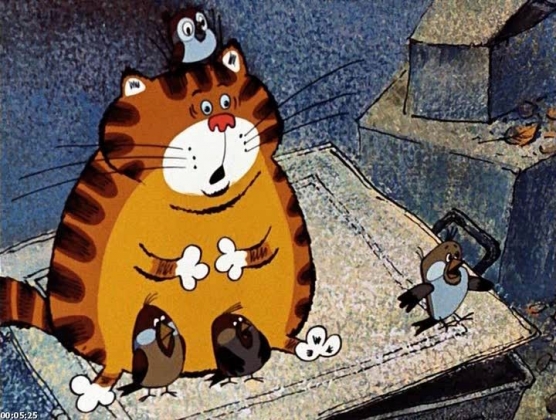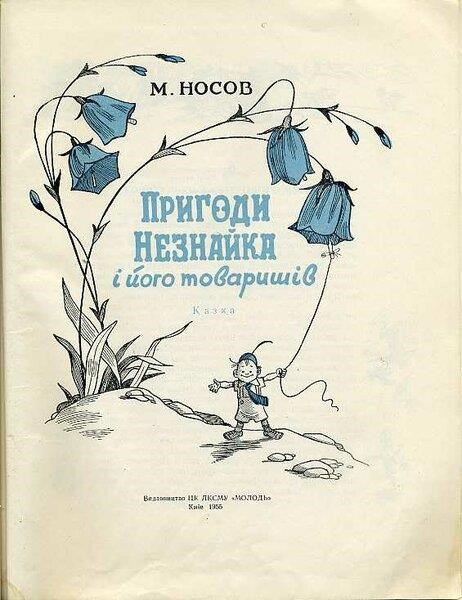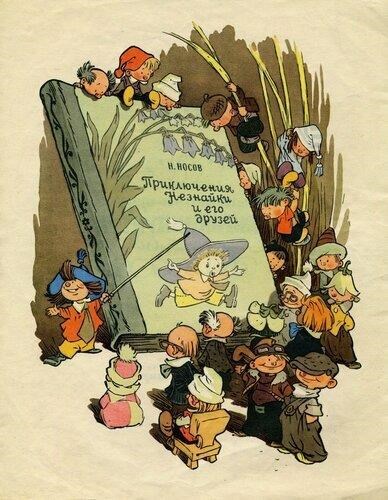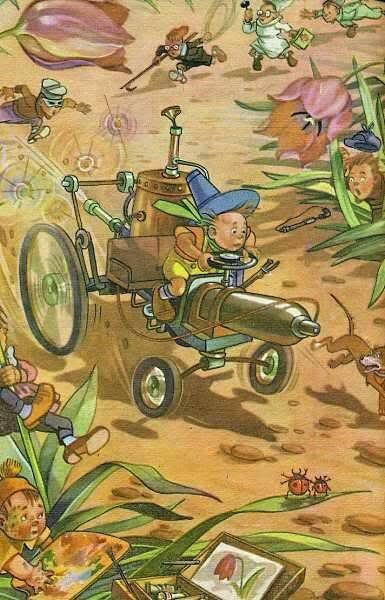Recently I talked with a friend igrodel, and he quite seriously convinced me that the main reason for the current crisis of the gaming industry is the lack of catchy images. Previously, they say, in good toys there were images that were deadly stuck in the user's memory - even purely visually. And now all the games are faceless, indistinguishable, a solid "Korea-style", and therefore fail one after another.
And I remembered how - already one of the last - I interviewed our great animator, Anatoly Savchenko, who made "Petya and the Little Red Riding Hood", "Vovka in the Fifties," "Carlson", "The Nutcracker", "The Return of the Prodigal Parrot »With a fat cat and a parrot Keshey and many other cult cartoons.

I asked him what was the hardest part of the work of the production designer, and he didn’t even think, but immediately said - come up with images. Nothing will help you here - neither skill, nor experience - nothing. You can call the best artists - and fail, or you can hire students - and enter the top ten!
An original, memorable image is the most difficult. It says, it took me the most time and effort. But, on the other hand, this is the most grateful. If you guessed with the image - it will feed you not even for years - for decades. I, says, in 1954, immediately after the death of Stalin, I came up with Moidodyr for the cartoon Ivanov-Vano.

And to me, she says, until now, Procter & Gamble pays extra for Myth washing powder - it’s very, he says, a significant increase in my small pension has turned out.
And why? Because I, says, guessed the image, he is remembered. But before me, the darkness of the people of Moydodyr painted, and the great artists - Kanevsky, Konashevich, Yuri Annenkov, but the image was not given to them - that's all!
And I immediately remembered one very interesting story, since, at one time, I was engaged in Soviet book illustration. One to one - to these words about "guessed - not guessed."
Who do you think this is?

This is a newborn Dunno.
Known to everyone is a fairy tale character of Ukrainian origin.
Here is the first image of this cult fairy-tale hero.
Not everyone knows that Dunno was born in Kiev, and from birth was a bilingual - barely born, he immediately spoke in two languages: Russian and Ukrainian.

Here's how the Biblio Guide tells the story:
“It is known that in 1952, on his way with the delegation of Soviet writers to Minsk on the anniversary of Yakub Kolas, Nosov talked all night long with the young Ukrainian writer Bogdan Chaly (at that time the editor of Barvinok magazine). It was to him that Nosov told about the idea of Dunno. They say that Chaly literally fell in love with the image of a charming little man and suggested that as soon as the first chapters of the work appear, without even waiting for its completion, to publish them in his journal. The offer was accepted, but the word is reserved. So for the first time the tale was published in the magazine "Periwinkle" in 1953-54. in two languages - Russian and Ukrainian (translated by F. Makivchuk) - entitled "The Adventures of Dunno and His Companions" with the subtitle "fairy tale-story".

And here she is in the presentation of another editor-in-chief of Vinca, Vasily Voronovich:
“In the compartment, Nikolai Nosov talked with Kiev resident Bogdan Chaly, the then editor of Barvinka. Cup after cup - and the writer was drawn to revelations: he told Chalom that he had long been carrying a story about a small people living in a fairy-tale country. But all does not dare to proceed with it. Then Bogdan Iosifovich, as they say, took the bull by the horns: “As soon as you get home (the writer went to Irpen in the Kiev region to visit relatives), you sit down at the table and start writing. I will print you in my journal. "

And so it happened. Nikolai Nikolaevich worked (the first chapters were written in Irpen, the rest in Moscow), then he sent the texts to the editorial office, where they were translated into Ukrainian (this was done by Fedor Makivchuk - editor of the humorous magazine “Perets”) and printed.

This Dunno - from there, from the "Periwinkle". The illustrations were made by a married couple of artists: Victor Grigoriev (a very eminent Leningrad artist, the famous “Gris” who worked in Kiev at that time) and Kira Polyakova. Drawn, by the way, in modern times arch-cool.
I draw your enlightened attention that Toropyzhka is still Toropyga, and in a friendly gop company there are Usatik and Borodatik nailed by the author later (I suspect that they were replaced by Avoska and Neboska and correctly done).
Subsequently, the Ukrainian version of Dunno came out as a separate book (only a year behind the Russian version) and was usually published with these illustrations.

However, with all the quality of the work of Ukrainian artists, Nosov’s tale, as they say, was “not given”. I already wrote that this happens - a character may “fail” to one artist, and the work of another will become classic. The inhabitants of the Flower City of Kiev were too old, some kind of short dwarfs, and Dunno turned out to be somehow unforgettable.
Therefore, when Alexey Laptev made his illustrations for the first Russian edition, where there were children playing as adults ...

And especially when Alexei Mikhailovich came up with the main dunno "chip" - a wide-brimmed blue hat ...

That won immediately and unconditionally. It was his illustrations that became classic. Dunno could no longer look different.
And it was “Laptevsky” Dunno that other great children's artists like Evgeny Migunov used in their illustrations (on the cover of the book is a Laptev illustration)

And even the people of Kiev were forced in the later editions to “finalize” their pictures for compliance with the canon:

And it is precisely the “Laptevsky” Dunno familiar to all of us from childhood that is depicted on the tombstone of the great Soviet storyteller Nikolai Nikolayevich Nosov.
